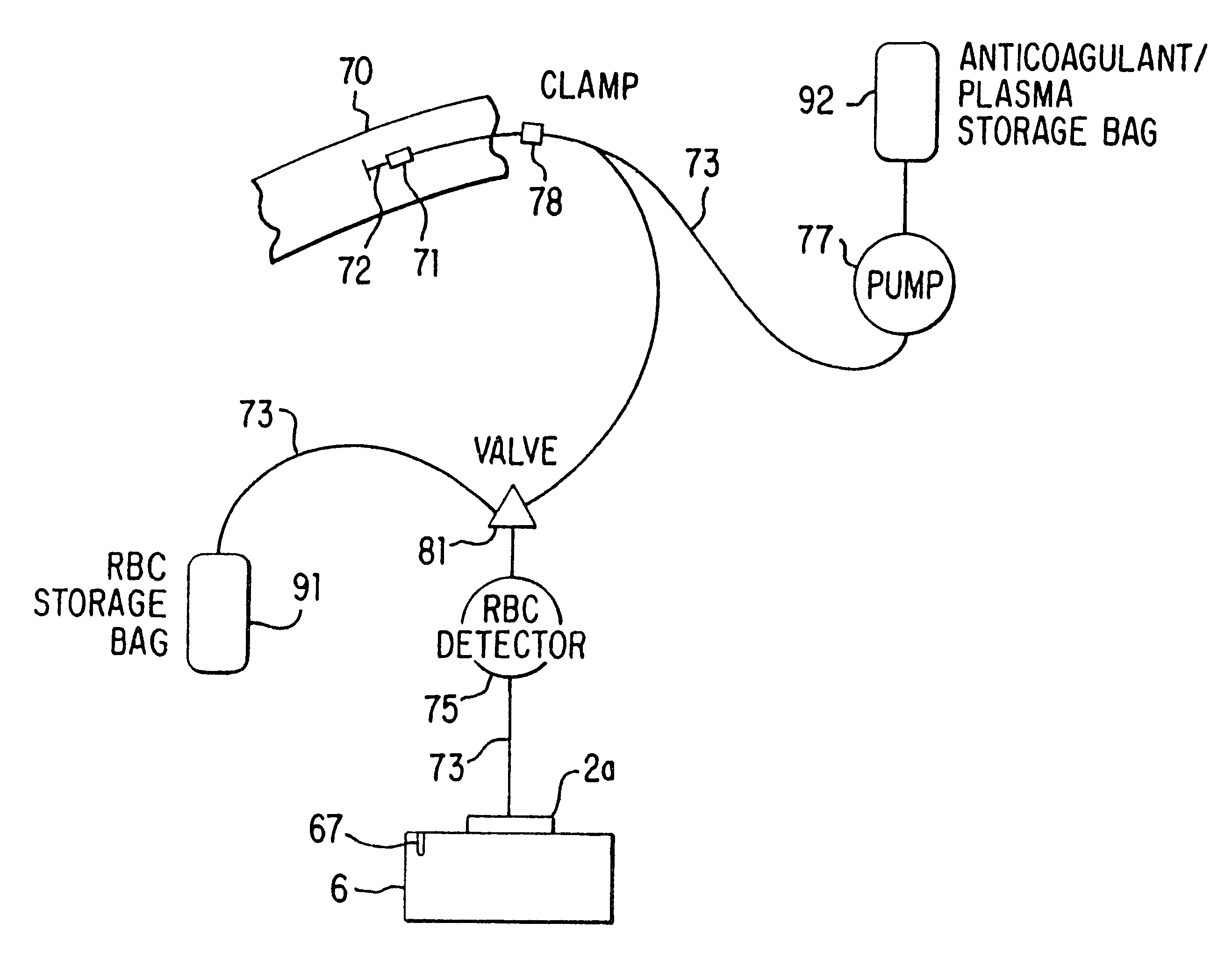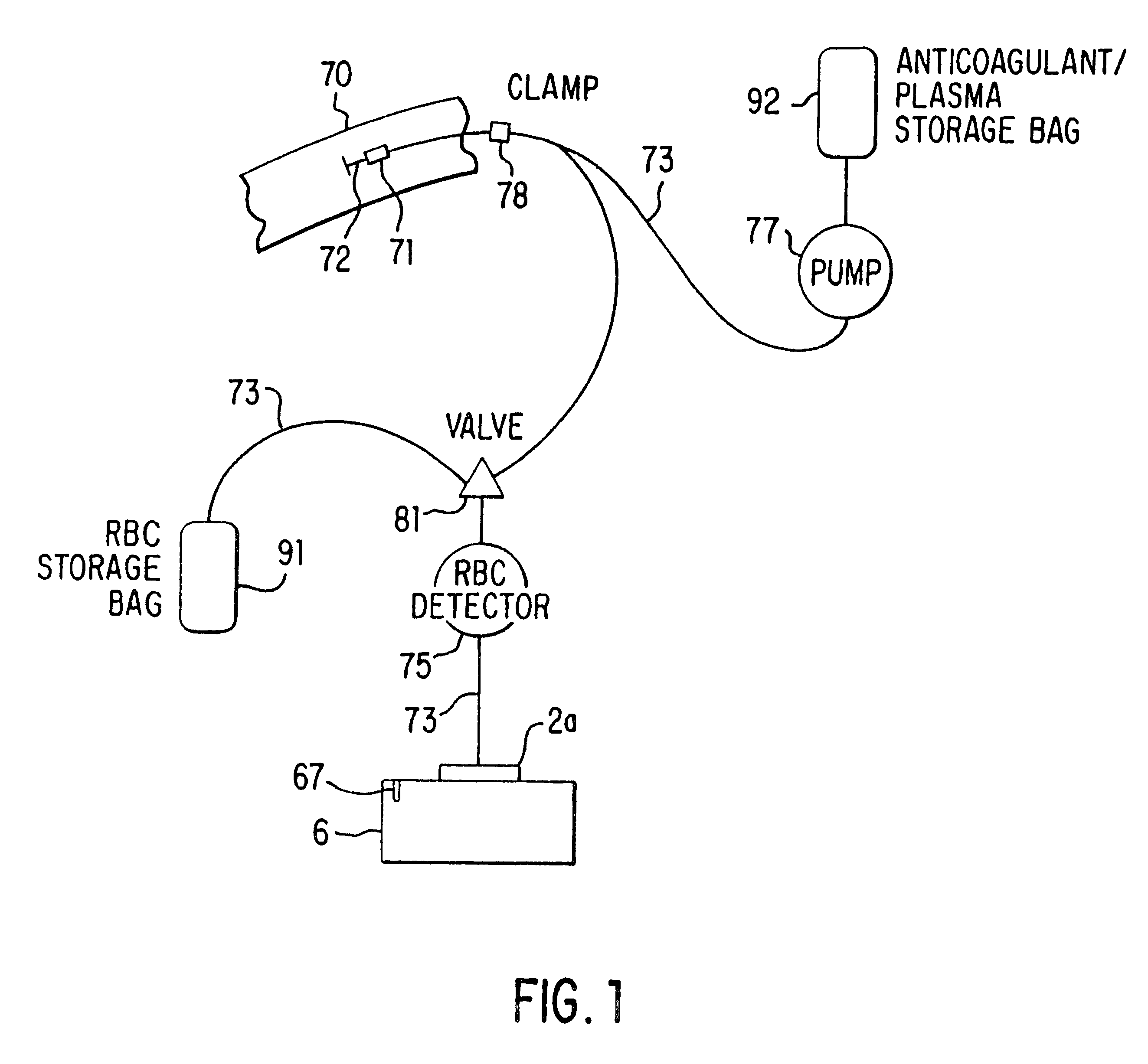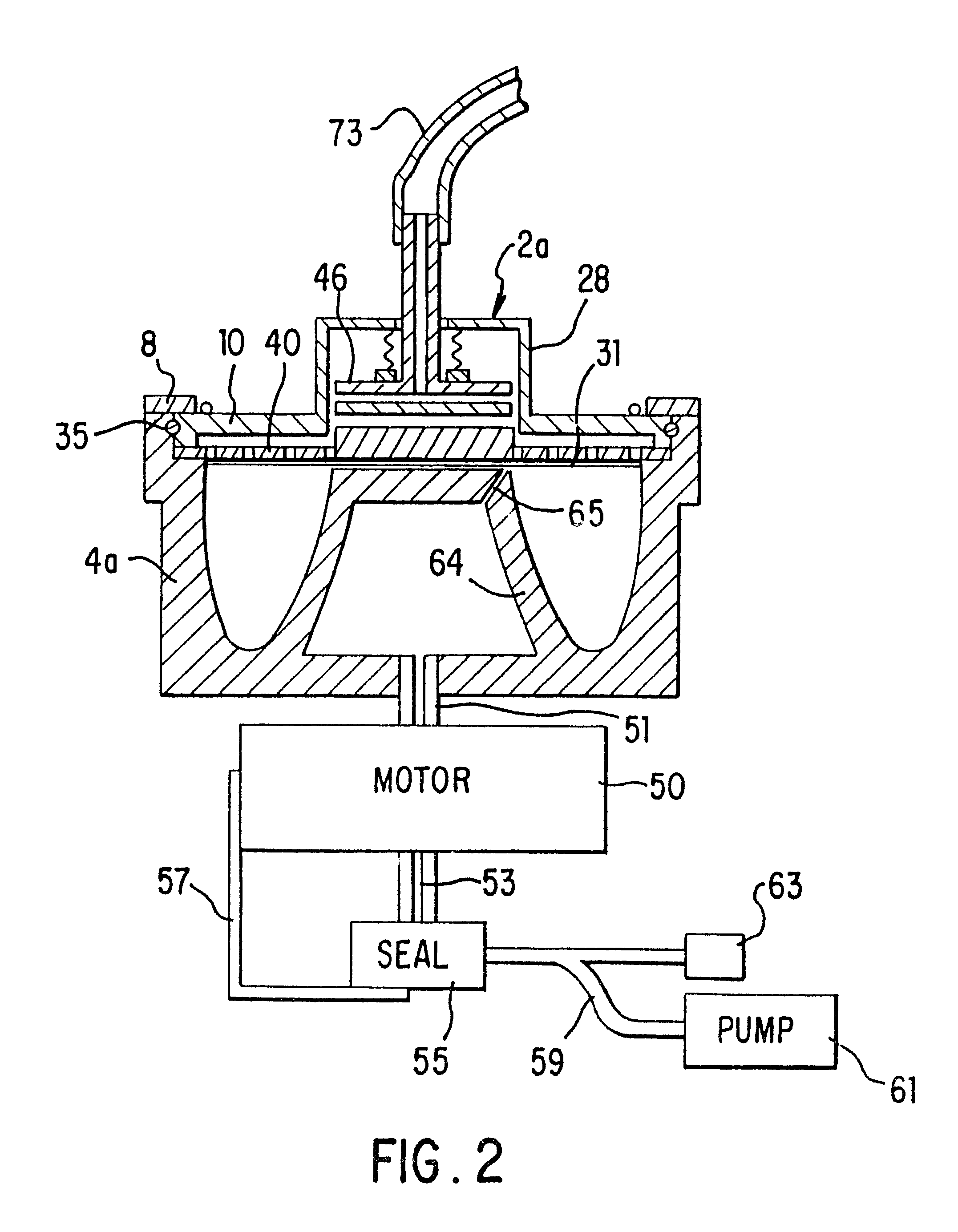Blood collection and separation system
a separation system and blood collection technology, applied in separation processes, centrifuges, filtration separation, etc., can solve the problems of damage to some red cells, manual process, and device failure to eliminate the centrifugation step described above,
- Summary
- Abstract
- Description
- Claims
- Application Information
AI Technical Summary
Problems solved by technology
Method used
Image
Examples
Embodiment Construction
The separator of this invention disclosure, shown schematically in FIG. 1, consists of a sterile, closed-system disposable set in which the blood is collected and processed and a control unit 6 that interfaces with the disposable set and that controls the collection and separation process. One embodiment of the disposable set consists of a needle 72 through which blood is drawn from the donor 70 and a bag 92 containing an anticoagulant such as ACD, CPD or trisodium citrate. This bag 92 serves as the storage container for the plasma or platelet-rich plasma following the processing of the blood by the system. The disposable set also includes a second bag 91, which may contain a red cell preservative solution, and into which the red cells are directed for storage following separation. The set further includes a variable-volume rotor 2a, preferably of the type shown in FIGS. 1-4 of the above-referenced co-pending application Ser. No. 08 / 322,601, now U.S. Pat. No. 5,733,253, although oth...
PUM
| Property | Measurement | Unit |
|---|---|---|
| time | aaaaa | aaaaa |
| volume | aaaaa | aaaaa |
| gravity | aaaaa | aaaaa |
Abstract
Description
Claims
Application Information
 Login to View More
Login to View More - R&D
- Intellectual Property
- Life Sciences
- Materials
- Tech Scout
- Unparalleled Data Quality
- Higher Quality Content
- 60% Fewer Hallucinations
Browse by: Latest US Patents, China's latest patents, Technical Efficacy Thesaurus, Application Domain, Technology Topic, Popular Technical Reports.
© 2025 PatSnap. All rights reserved.Legal|Privacy policy|Modern Slavery Act Transparency Statement|Sitemap|About US| Contact US: help@patsnap.com



